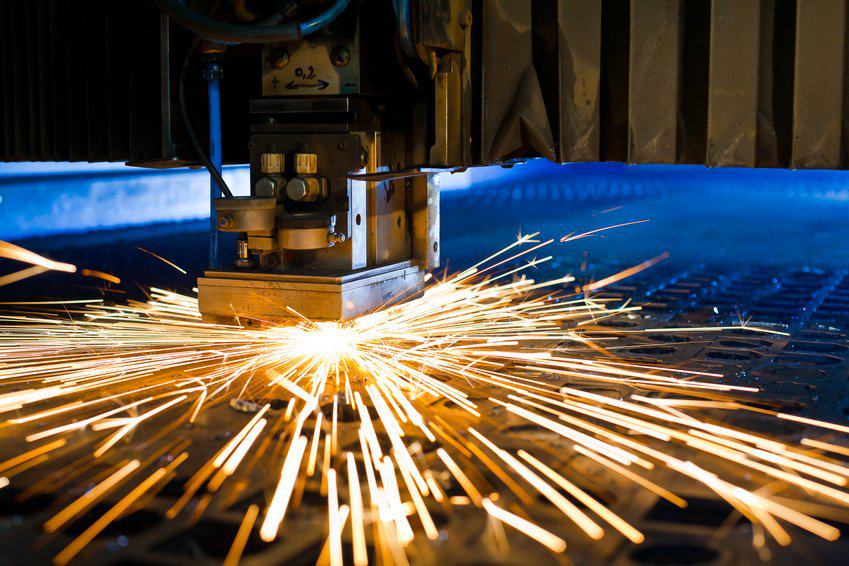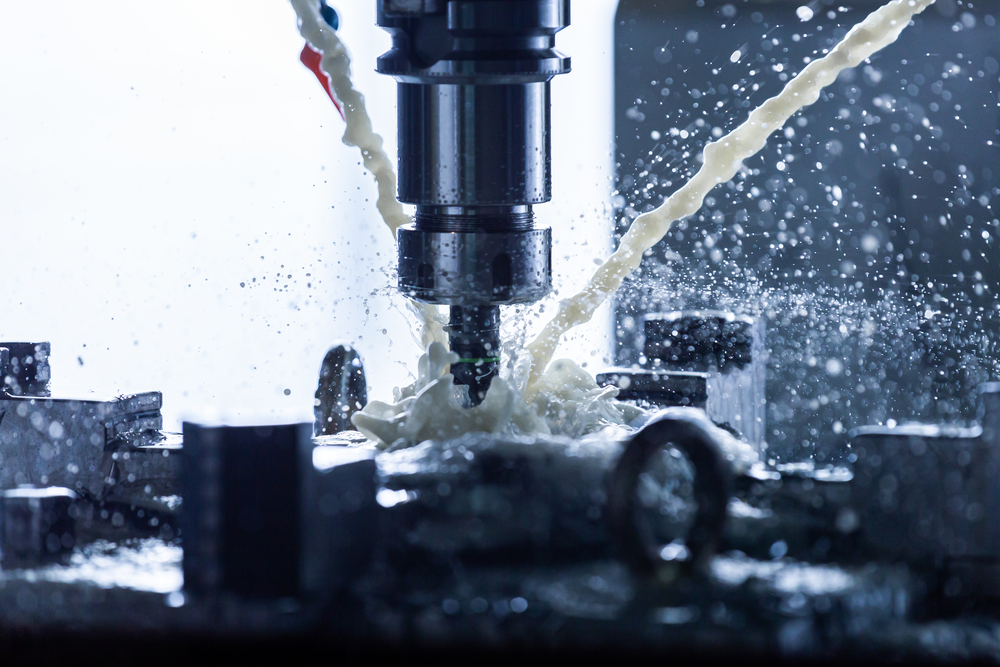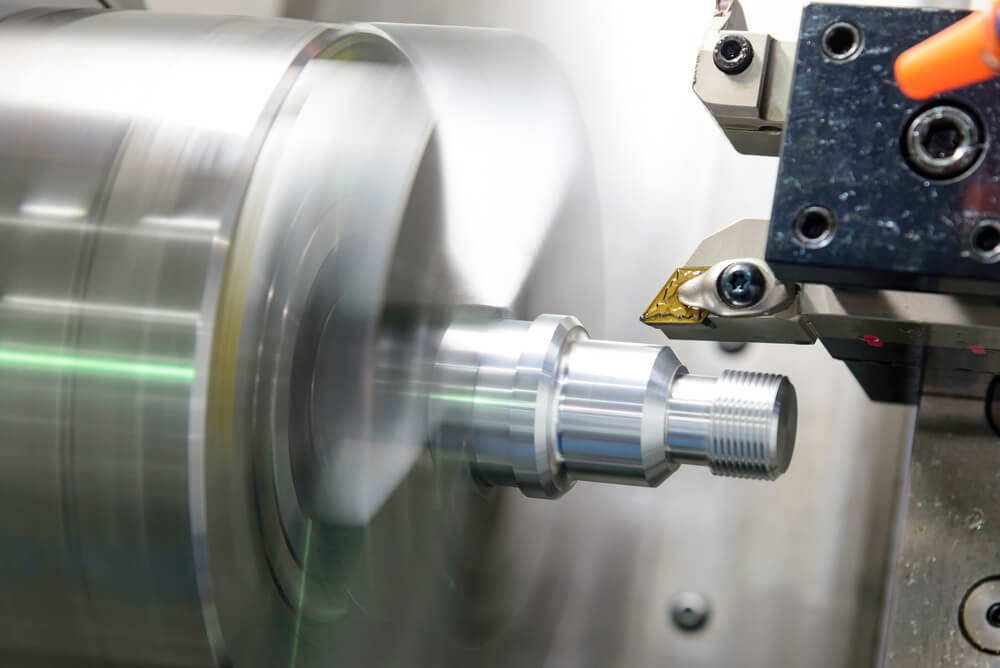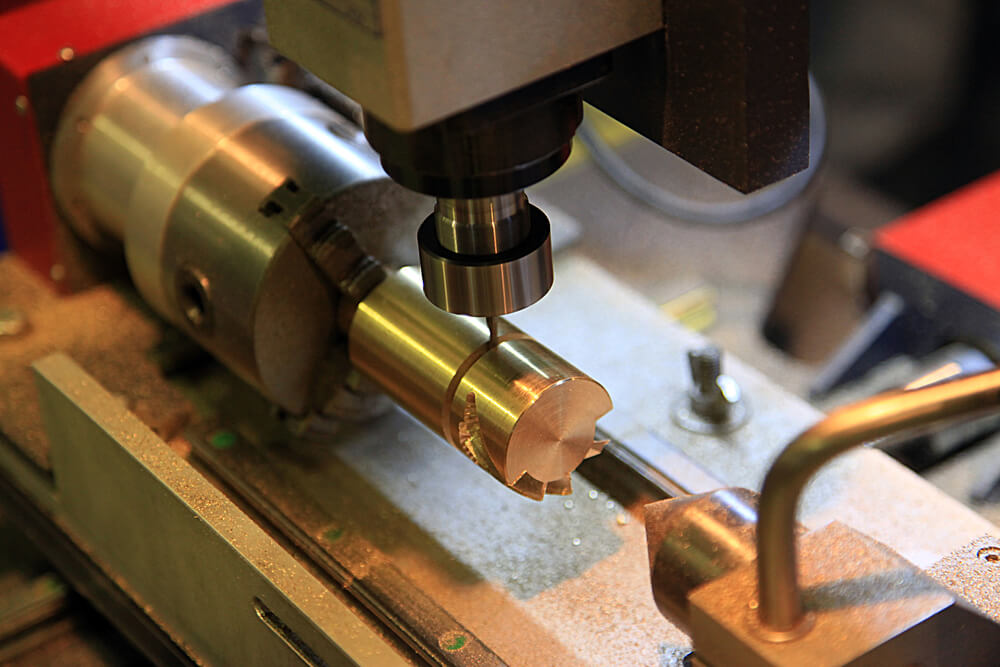Understanding the Impact of Material Machinability in CNC Manufacturing
Imagine this: you have a vision for a fantastic, space-age part, and the allure of titanium, with its futuristic vibe and superhero-like strength, is calling your name. Sure, having your part made from titanium sounds as cool as a sci-fi flick, but before you go all “Tony Stark” on your project, let’s talk about understanding the influence of machinability in CNC manufacturing.
Now, I know what you’re thinking, “Why do I need to be a material machinability expert? Isn’t it just cool to say my part is made of titanium?” Well, my CNC enthusiasts, it’s undeniably awesome to have a part boasting a name as impressive as titanium, but there’s more to the story than mere material bravado. Knowing the ins and outs of material machinability can save you from becoming embattled with increased costs, longer production times, and a messy tangle of secondary processes. In fact, sometimes opting for the “unsung heroes” of materials can make your CNC creation shine even brighter. So knowing the machinability of aluminum vs the machinability of titanium can save you time, money, and energy getting your idea into production.
Machinability in CNC manufacturing is one of the key factors to controlling costs, slashing production timelines, and ensuring that secondary processes like surface finishing and bending run smoothly. For this reason we have an intuitive parts analyzer built into eMachineShop CAD to help with cost-reduction, because knowing the difference between the machinability of aluminum and steel is an extremely pragmatic skill that needs to be accounted for.
So let’s discuss a bit further about what machinability means in regards to CNC manufacturing, how it differs between metal and plastic raw materials, and some specific examples of machinability in commonly used materials.

What is Machinability and How Does It Affect CNC Fabrication?
“Machinability” refers to how easily a material can be cut, shaped, or otherwise worked on using various machining processes, such as CNC fabrication processes such as milling, turning, drilling, or grinding. It is a critical consideration when selecting materials for manufacturing or mechanical applications. The machinability of a material impacts production efficiency, tool wear, and the quality of the final product. Several factors affect machinability:
Cutting Properties:
Machinability involves the ease with which a material can be cut or removed by tools. Some materials are harder to cut than others due to differences in hardness, toughness, or other mechanical properties.
Tool Wear:
Materials with poor machinability may cause rapid tool wear, leading to frequent tool replacement and increased production costs. Tool life is an important factor in assessing machinability since it directly ties to CNC manufacturing machines maintenance labor and tooling costs.
Surface Finish:
The ability to achieve a smooth and precise surface finish on a workpiece is an essential aspect of machinability. Materials that tend to produce rough or irregular surfaces may require more post-processing for even surface finishing such as powder coating.
Chip Formation:
The formation and evacuation of chips (the material that is removed during machining) are crucial. Some materials produce chips that are easy to manage, while others create problems like chip recutting, which can affect machining efficiency associated with production runs.
Thermal Conductivity:
Heat generation during machining can be a concern. Materials with high thermal conductivity can dissipate heat more effectively, reducing the risk of overheating and improving tool life.
Chemical Reactivity:
Some materials are chemically reactive with cutting fluids or tool materials, which can affect machining processes. Compatibility with cutting fluids and tool materials is an important consideration when choosing a raw material for CNC machining.
Abrasiveness:
The presence of abrasive elements in a material can cause rapid tool wear and hinder machinability. Abrasive materials can damage cutting tools quickly which leads to extra costs associated with CNC tooling replacements and labor for maintenance and upkeep.
Work Hardening:
Certain materials may undergo work hardening during machining, making them more challenging to cut as the process progresses. In materials science, work hardening, also known as strain hardening, is the strengthening of a metal or polymer by plastic deformation, which lengthens the production time, increases wearing on tooling, and reduces efficiency of CNC output capabilities.
Tool Material and Coatings:
The choice of cutting tools and coatings can also impact machinability. Using appropriate tool materials and coatings can help mitigate some of the challenges presented by difficult-to-machine materials.
When selecting raw materials for CNC manufacturing for a custom part, it’s important to consider the intended CNC machining processes, tooling, and desired outcomes. Materials with good machinability can lead to more efficient manufacturing processes, lower production costs, and higher-quality end products. Materials with poor machinability may require specialized tooling, slower cutting speeds, or other adjustments to achieve the desired results.

How is the Machinability of Materials Measured?
To assess machinability, the American Iron and Steel Institute (AISI) conducted turning tests on various metals at a speed of 180 surface feet per minute (sfpm). They determined the weighted averages for normal cutting speed, surface finish, and tool life for each material.
The metal used as the 100% reference point was 160 Brinell B1112 steel, and it was employed to compare the machinability rating of other metals. Metals with a value greater than 100% are considered softer and, therefore, easier to machine, while those with values below 100% are harder materials, making them more challenging to machine.
This approach serves as a valuable reference point, offering an approximate guide, particularly for turning. However, it’s important to note that if the same exercise were conducted with machining methods other than turning, there might be variations in the results.
Another approach to gauge the machinability of materials involves engineers and materials scientists using various metrics, such as power consumption (the energy required to cut the material), cutting tool longevity (how quickly a tool deteriorates while cutting the material), and surface finish (the smoothness of the resulting cut material).
Power consumption: Machinability can be evaluated by assessing the forces necessary to cut through the material, which are quantified using established energy metrics.
Cutting tool life: Machinability can be appraised by measuring the duration a cutting tool remains functional when used to cut a specific material.
Surface finish: Machinability can be evaluated by observing the extent of built-up edge formation during machining, with materials deemed highly machinable exhibiting minimal build-up edge.
Regrettably, none of these methods is entirely infallible, as there are various independent factors that can influence power consumption, cutting tool wear, and surface finish.
However, on eMachineShop’s Materials Page we have an interactive graphic that sorts materials based on a number of properties, one of them being their “Machinability Rating.” This simplifies the process of understanding the machinability of commonly used materials in CNC manufacturing.
The Machinability of Metals vs Plastics
The machinability of metals and plastics differs in several key ways due to their distinct properties and behaviors. Typically the machinability of plastics is easier than metals, but with that speed typically comes with drawbacks in accuracy and uniformity. As a result of their varied machinability scores, there are factors and differences to be considered between machining metals and plastics. Let’s take a look at a few:
Material Hardness:
- Metals are generally harder and more rigid than plastics. Machining metals often requires more robust and wear-resistant cutting tools.
- Plastics are softer and more flexible, making them easier to cut, but they can be prone to burring or melting if not machined properly.
Chip Formation:
- Metals produce chips during machining, which can be sharp and have potential safety concerns. Managing metal chips is important and time consuming as they can pose environmental and safety issues.
- Plastics typically form continuous or stringy chips that are easier to manage and don’t pose the same safety risks as metal chips.
Heat Generation:
- Metal machining generates a significant amount of heat, which can affect tool life and workpiece integrity. Cooling and lubrication are crucial in metal machining.
- Plastics machining generates less heat, reducing the need for extensive cooling and lubrication, but excessive heat can lead to melting or deformation of plastic parts.
Material Removal Rates:
- Metal machining often involves slower material removal rates due to the hardness of metals, requiring more powerful machines and robust tooling.
- Plastics can be machined at faster material removal rates because they are easier to cut, but care must be taken to avoid overheating and deformation.
Tool Wear:
- Metal machining can lead to more significant tool wear, necessitating the use of harder, more wear-resistant tool materials.
- Plastics machining typically results in less tool wear, but proper tool selection and design are still critical to maintain high-quality surface finishes.
Surface Finish:
- Achieving a smooth surface finish on metal parts often requires additional processes such as grinding or polishing.
- Plastics can often achieve a smooth surface finish directly from the machining process.
Tolerance and Precision:
- Metals can generally hold tighter tolerances and precision due to their more stable and consistent properties.
- Plastics may exhibit more variability in dimensions and properties, which can affect the achievable tolerances.
Coolants and Lubricants:
- Metals machining almost always requires coolants and lubricants to dissipate heat and improve tool life.
- Plastics machining may not require coolants and lubricants, depending on the specific material and machining process.
Cutting Tools:
- Cutting tools for metal machining are typically made of hard materials, such as carbide or high-speed steel.
- Cutting tools for plastics machining are often made of high-speed steel or carbide, but may have specialized coatings or geometries for optimal results.
Generally speaking, easier metal machinability typically leads to faster manufacturing times and reduced tool wearing while maintaining tight tolerances. This is why Aluminum 6061 is such a dominant material in the manufacturing world. It offers easy machinability, reducing wear on the CNC machines while improving output speeds compared to its titanium or steel counterparts. This is the main reason why metal alloys such as stainless steel are generally reserved for more specific situations where the material improves the parts functionality.
While easier machinability in metals is greatly favored by engineers and machinists, in plastics, it has some drawbacks. If a plastic offers poor machinability it is much more difficult to create uniformity in production runs and sometimes calls for specialized tooling. That’s why firmer or higher grade machinable plastics, such as Acetal, are the most commonly used. Acetal offers fast production speeds and an ease on the machining tools while also maintaining consistent tight tolerances.
Understanding these factors and differences is crucial when choosing the right CNC machining processes, tooling, and parameters for metals and machinable plastics to achieve the desired results while maximizing efficiency, minimizing tool wear, and optimizing overall cost effectiveness. That’s why choosing the right material for functionality is so important. Anything less than ideal is technically not optimally designed. Why use a more difficult material to machine when there is a more economic and efficient alternative that won’t impact the parts functionality?

Machinability of Commonly Used Metals in CNC Manufacturing
Now let’s take a look at some common metal materials used in CNC fabrication and how their intrinsic material properties affect their machinability.
Two common metals known for easy machinability are:
Brass: Brass is an alloy primarily composed of copper and zinc. It is highly regarded for its excellent machinability due to its relatively low hardness, good chip formation, and minimal tool wear. Brass can be efficiently turned, milled, and drilled, making it a popular choice for various precision components and decorative items.
Aluminum: Aluminum and its alloys, like 6061 or 7075, are also known for their excellent machinability. They are relatively soft and have good thermal conductivity, which helps in efficient chip evacuation and reduces the risk of overheating. Aluminum is widely used in industries like aerospace and automotive for its ease of machining.
Two common metals known for their poor machinability are:
Stainless Steel: Stainless steel, particularly austenitic grades like 304 and 316, is known for its poor machinability. It is relatively hard, generates high cutting forces, and produces heat, leading to rapid tool wear. Specialized tooling and cutting parameters are often required to machine stainless steel effectively.
Titanium: Titanium and its alloys, such as Grade 5 (Ti-6Al-4V), are considered challenging to machine due to their high strength, low thermal conductivity, and tendency to work harden. Machining titanium often requires specialized tooling, coolants, and cutting strategies to achieve good results without excessive tool wear.
Keep in mind, these are general classifications, and within each category, specific alloys or grades may exhibit varying degrees of machinability. Factors like tool selection, cutting speeds, feeds, and coolant choices, like previously stated, play a significant role in improving the machinability of these metals.
And this is not to say that machining custom parts in Stainless Steel or Titanium is a poor decision. The specificity and function of a part may call for that material to be used. It’s just important to note that since the machinability of aluminum is much easier compared to the machinability of titanium, the manufacturing cost of the same part will differ due to the machinability of the raw material.
Machinability of Commonly Used Plastics in CNC Manufacturing
Now that we have taken a look at common metals such the machinability of aluminum and the machinability of steel, let’s take a look at some common plastics used in manufacturing and why some are more prevalent and cost effective than others.
Two common plastics known for their easy machinability are:
Acetal (Polyoxymethylene or POM): Acetal is a thermoplastic with excellent machinability. It has low friction properties, good dimensional stability, and can be easily machined using conventional cutting tools. Acetal is often used for components like gears, bushings, and bearings.
Acrylic (Polymethyl Methacrylate or PMMA): Acrylic is another plastic with good machinability. It can be readily cut, drilled, milled, and turned to create a wide range of products, including signage, displays, and various decorative items. Acrylic is known for its clarity and transparency.
Two common plastics known for their poor machinability are:
Polytetrafluoroethylene (PTFE): PTFE, often referred to by the brand name Teflon, is known for its challenging machinability. It has a low coefficient of friction and is resistant to heat and chemicals, but it’s also soft and has a tendency to deform and generate excessive heat during machining. Specialized tooling and techniques are required to machine PTFE effectively.
UHMWPE (Ultra-High-Molecular-Weight Polyethylene): UHMWPE is highly abrasion-resistant and has low friction properties, making it suitable for applications like conveyor components and liners. However, its high molecular weight and inherent toughness make it challenging to machine, particularly due to its propensity to produce stringy chips and heat.
It’s important to note that within each plastic category, the specific formulation, additives, and processing methods can influence machinability. Additionally, proper tool selection and machining techniques can help mitigate some of the challenges associated with machining difficult plastics.

Material Machinability: A Leading Factor in Custom CNC Manufacturing Costs
As we wrap up our journey through the spectrum of machinability in custom CNC manufacturing, one thing becomes abundantly clear: it’s a dynamic force that can shape, both literally and figuratively, the destiny of your projects. The decisions you make regarding material selection are the choices that can turn a mundane project into a successful endeavor or a costly mistake.
Understanding machinability isn’t just a “nice-to-have” skill; it’s a needed one that empowers you to create efficiently, economically, and effectively. By embracing the science of material selection and how it impacts CNC manufacturing processes, you are ensuring that every project emerges as a cost effective and deliverable success.
So, whether you’re forging ahead with titanium or opting for the smoother path of machinability, remember that you hold the keys to manufacturing efficiency in your hands. Armed with this knowledge, you’re ready to tackle your next project with crucial considerations in the forefront, whether they be science-fiction or not.